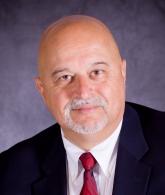OSHA’s 35-lb. lifting limit
First, let’s set a simple ground rule: Don’t shoot the messenger! I am here for you, and part of that responsibility includes sometimes having to tell you what you won’t want to hear. I don’t make the rules; I just share them with you.
One of my long-term care clients in the Midwest recently had an OSHA inspection, and although the compliance officer did not issue a citation, he made it very clear that when he comes back, he expects to see a written safe resident-handling plan that includes compliance with the National Institute for Occupational Safety and Health (NIOSH) recommendation that no worker should lift anything heavier than 35 lbs. without some type of assistive lift device.
As I challenged him, he was very clear that when lifting a resident, that may mean using a mechanical lift device, or when lifting something such as bulk food packages in the dietary department, that could mean using some type of a wheeled cart. Regardless, OSHA seems to be poised to begin enforcing this weight limit.
That still didn't sound right, so I reached out to one of OSHA's ergonomic experts based in Wisconsin. She reinforced what the compliance officer had told me: Take the 35-lb. lifting limit seriously, and put compliance programs in place accordingly.
Many people do not understand what NIOSH is…and isn’t. NIOSH is the U.S. federal agency responsible for conducting research and making recommendations for the prevention of work-related injury and illness. NIOSH is part of the U.S. Centers for Disease Control and Prevention and can be considered a sister agency to OSHA. NIOSH develops the recommendations and OSHA enforces them. If you aren't familiar with OSHA verbiage and terminology, when OSHA says “we recommend” it usually means “we will enforce.” When OSHA says “consider doing” it usually means “just do it.” In other words, when OSHA says it recommends complying with the NIOSH recommendation, it likely means “we will enforce.”
So, in a resident-handling activity, when the weight to be lifted exceeds 35 lbs. (a scenario that will include nearly every resident), assistive devices should be used. Note that this is a NIOSH recommendation and not a codified OSHA standard. Still, in light of this coming from NIOSH, OSHA can and will be enforcing it under Section 5(a)(1) of the general duty clause, which reads:
"Each employer shall furnish to each of his employees employment and a place of employment which are free from recognized hazards that are causing or likely to cause death or serious physical harm to his employees."
So where do we take it? First, realize that “lifting” and “assisting” differ. To lift means to raise the entire weight of the mass being raised. If a dietary worker moves a 5-gallon bucket of pickles, he or she is managing the entire weight of the bucket. To “assist,” as it relates to our residents, suggests that the resident is capable of bearing some degree of his or her own weight and that the caregiver is assisting rather than lifting the total body weight. It is important that all employees understand the difference. When an employee injury event is documented, delineate carefully between events that are true “lifting” events and those that are actually “assisting” events.
I asked my compliance officer friend how this adherence was going to be enforced and what would prompt OSHA to dig deeper into a facility’s lifting plan. He informed me that it is a judgment call on the part of the compliance officer. When the compliance officer is reviewing the OSHA 300 logs and the employee injury reports, if he or she believes that an unacceptably high number of musculoskeletal injuries are resulting from lifting, then the compliance officer may dig deeper. If the compliance officer does not believe that the number of musculoskeletal injuries is of concern, then he or she likely will move on. No equation or formula is used to calculate; investigation is truly based on the opinion of the compliance officer.
My recommendations:
- Develop a safe resident-handling plan that clearly addresses practices related to both assisting a resident and lifting a resident.
- Establish a 35-lb. maximum weight lifting limit.
- Provide enough mechanical lift devices for the staff to use as needed.
- Enforce employee compliance by using progressive disciplinary actions that show management commitment.
Being a healthcare safety professional does not always mean that I am the bearer of good news. We do know from experience that OSHA seems to be continuing its aggressive approach toward long-term care, and we must remain diligent in our efforts to provide the safest work environment possible for our employees.
Stay safe and stay in touch!

Steve Wilder, CHSP, STS, is president and chief operating officer of Sorensen, Wilder & Associates (SWA), a healthcare safety and security consulting group based in Bourbonnais, Ill. SWA performs workplace safety compliance audits and security vulnerability assessments in all types of healthcare facilities. Wilder can be reached at (800) 568-2931 or swilder@swa4safety.com.
Related Articles
Topics: Executive Leadership , Regulatory Compliance










